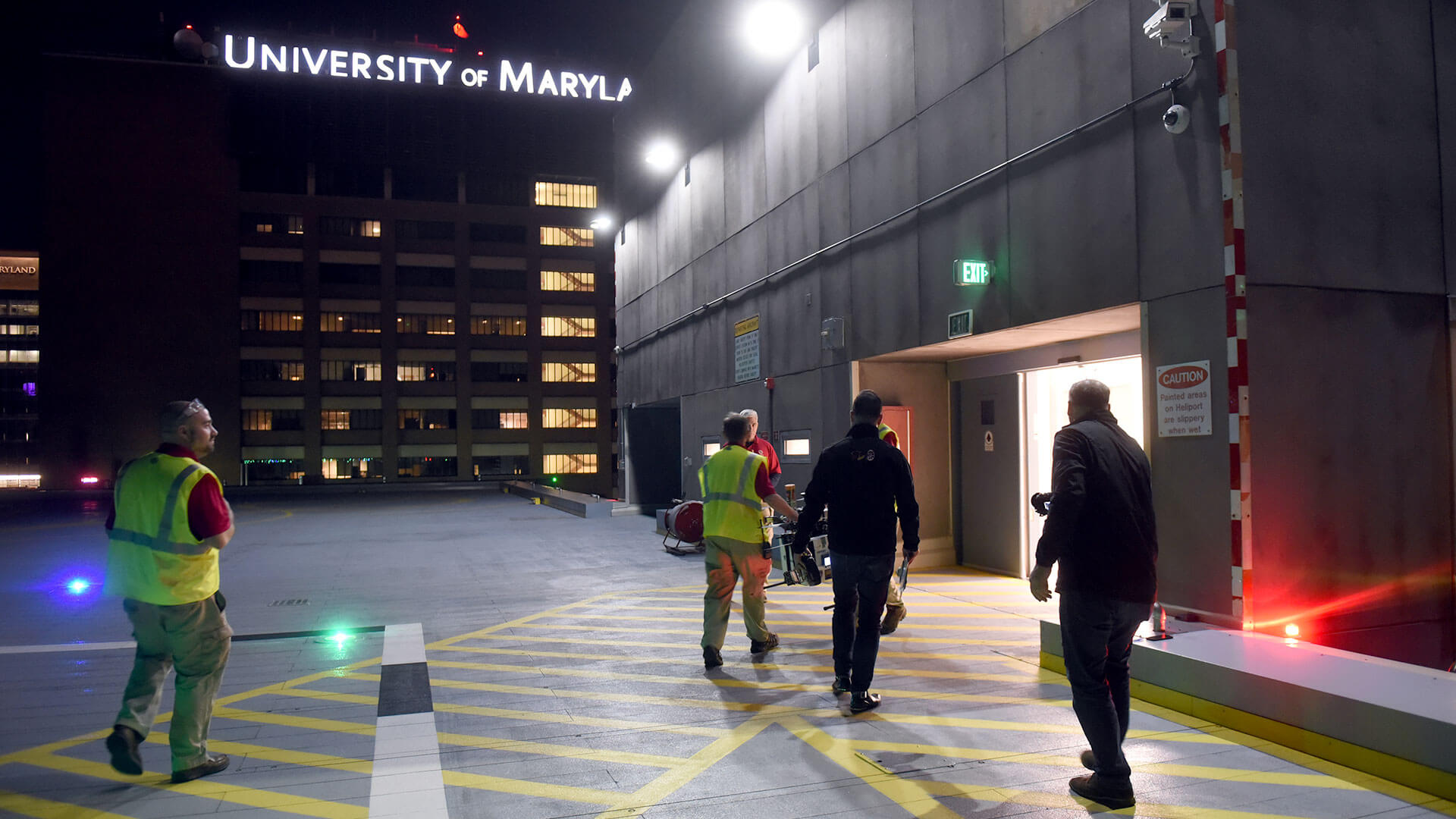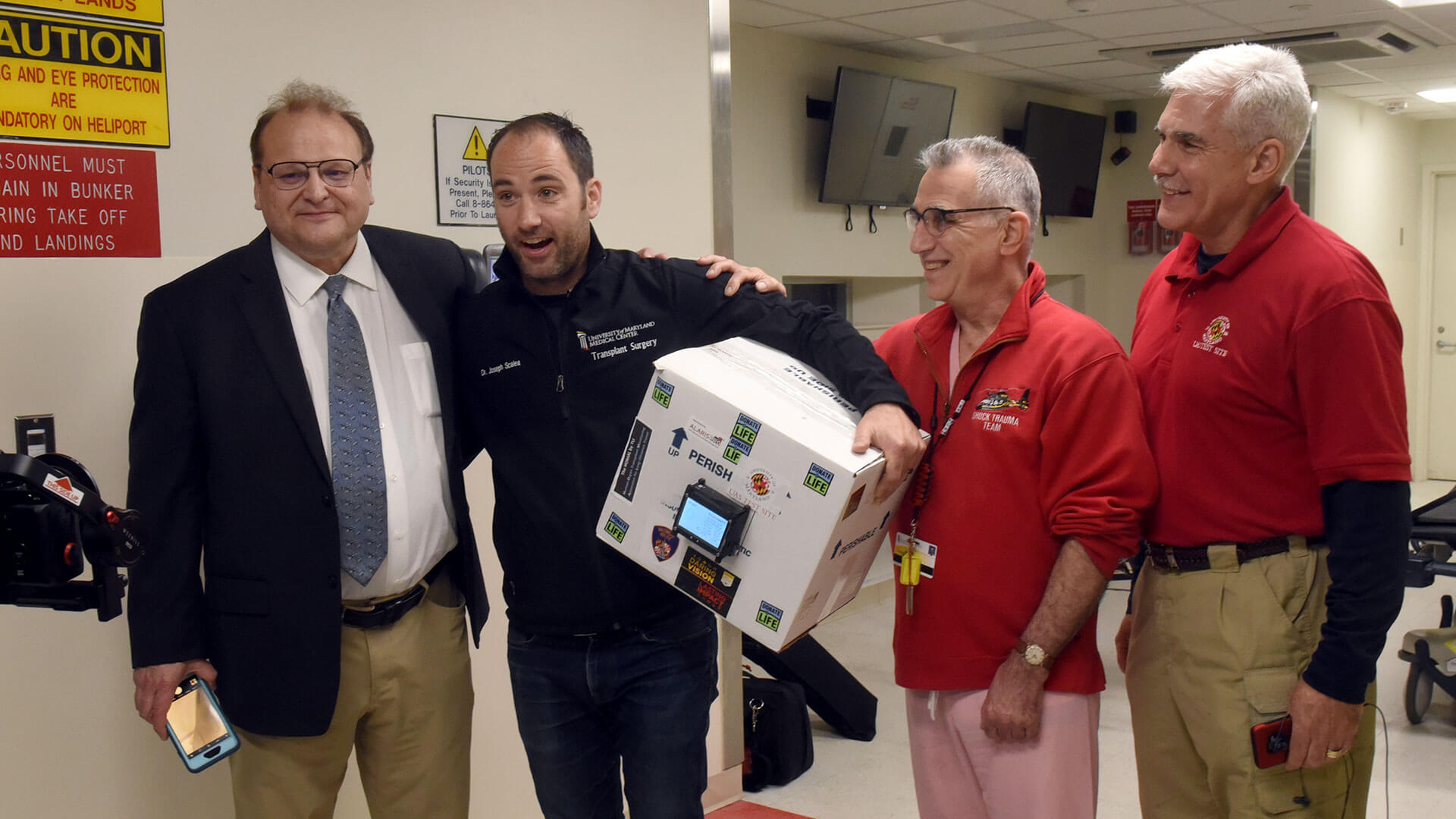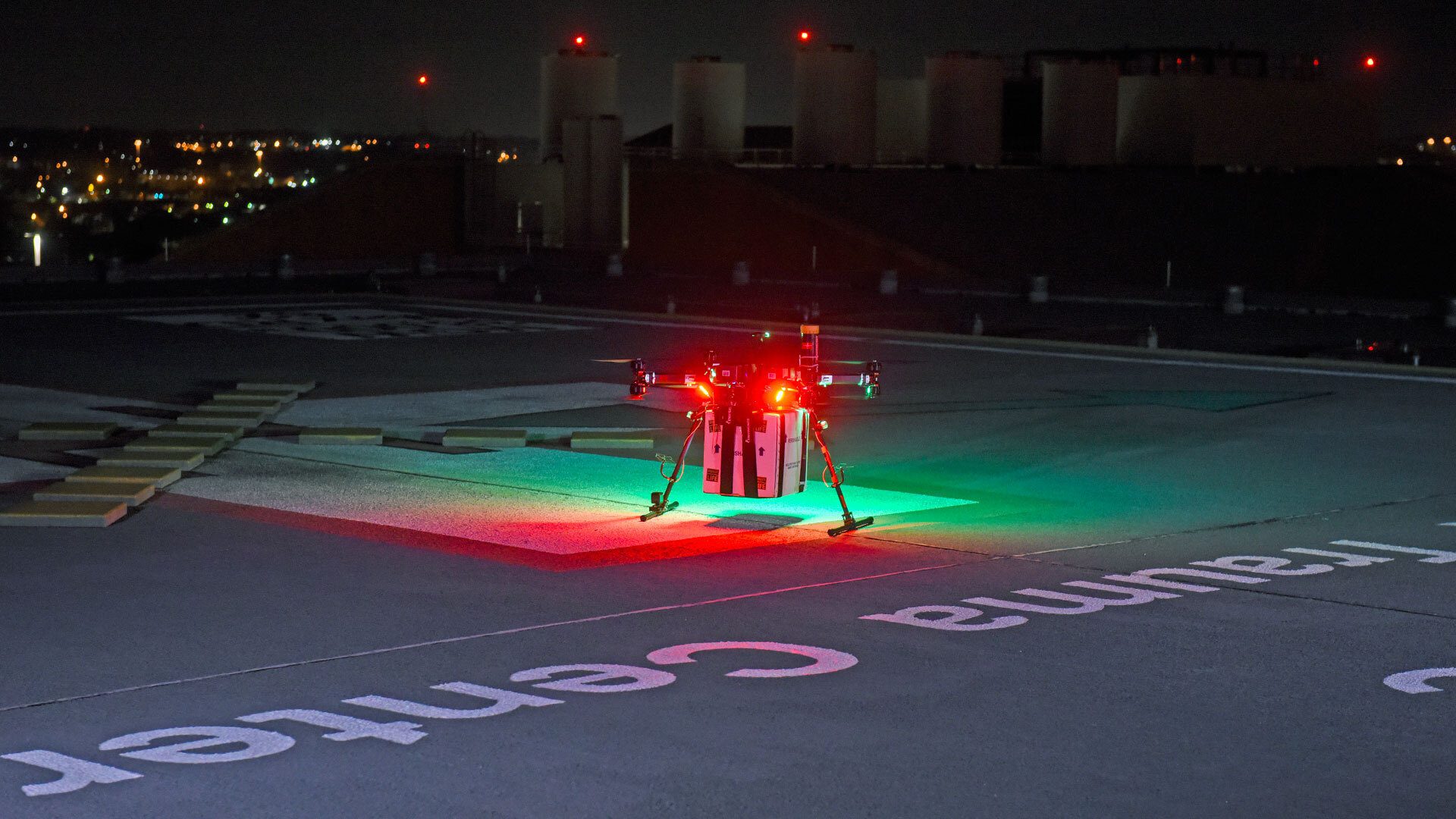- April 29, 2019
- By Maryland Today Staff
A custom unmanned aerial system (UAS) built by University of Maryland engineers delivered a kidney that was successfully transplanted into a patient at the University of Maryland Medical Center, an unprecedented feat that marked a leap in both transplant medicine and unmanned aircraft operations, officials from the two institutions announced on Friday.
The closely observed, 2.8-mile flight over Baltimore took place on April 19, carrying a donor kidney from Living Legacy Foundation, a nonprofit organ procurement organization located on the outskirts of the city, to physicians at the downtown hospital. They transplanted it into a 44-year-old Baltimore woman suffering from kidney failure who volunteered to be part of the pioneering test.
Project leaders said the successful demonstration illustrates the potential of UAS—popularly known as “drones”—for providing organ deliveries that, in many cases, could be faster, safer and more widely available than traditional transport methods such as commercial flights.
As astonishing as the flight was from an engineering standpoint, the larger purpose at stake is the chance to enhance human life, said Darryll J. Pines, dean of the A. James Clark School of Engineering and Nariman Farvardin Professor of Aerospace Engineering.
“This history-making flight not only represents a breakthrough from a technological point of view, but provides an exemplary demonstration of how engineering expertise and ingenuity ultimately serve human needs—in this case, the need to improve the reliability and efficiency of organ delivery to hospitals conducting transplant surgery,” Pines said.
It took years of work, constant testing and research and more than 100 people to make the flight a reality, said Dr. Joseph Scalea, the project team leader and an assistant professor of surgery at the University of Maryland School of Medicine.
“As a result of the outstanding collaboration among surgeons, engineers, the Federal Aviation Administration, organ procurement specialists, pilots, nurses and, ultimately, the patient, we were able to make a pioneering breakthrough in transplantation,” Scalea said.
Technological firsts of the delivery include the specially designed apparatus for maintaining and monitoring a viable human organ in flight; a custom-made aircraft with eight rotors and multiple powertrains for redundancy in the case of a possible component failure; the use of a wireless mesh network set up to control the UAS, monitor aircraft status and provide communications for the ground crew at multiple locations; and aircraft operating systems that combined best practices from both UAS and organ transport standards.
“We had to create a new system that was still within the regulatory structure of the FAA, but also capable of carrying the additional weight of the organ, cameras and organ tracking, communications and safety systems over an urban, densely populated area—for a longer distance and with more endurance,” said Matthew Scassero, director of the Clark School’s UAS Test Site in St. Mary’s County. “There’s a tremendous amount of pressure knowing there’s a person waiting for that organ, but it’s also a special privilege to be a part of this critical mission.”
Prior to this landmark organ delivery flight, the Maryland partners worked together to develop and test the UAS by first successfully transporting saline, blood tubes and other materials, and then by transporting a healthy, but nonviable, human kidney in 2018.
Because organ transportation logistics are often the most complicated part of the transplant process, a system of unmanned delivery craft could meet a vital need, Scalea said, both preventing delays due to the unpredictable nature of commercial travel, and solving a lack of transportation options in some areas of the country.
According to the United Network for Organ Sharing, which manages the organ transplant system in the United States, there were nearly 114,000 people on waiting lists for an organ transplant in 2018. About 1.5% of deceased donor organ shipments did not make it to the intended destination; and nearly 4% of organ shipments had an unanticipated delay of two or more hours.
“There remains a woeful disparity between the number of recipients on the organ transplant waiting list and the total number of transplantable organs. This new technology has the potential to help widen the donor organ pool and access to transplantation,” said Scalea. “Delivering an organ from a donor to a patient is a sacred duty with many moving parts. It is critical that we find ways of doing this better.”
Topics
Research